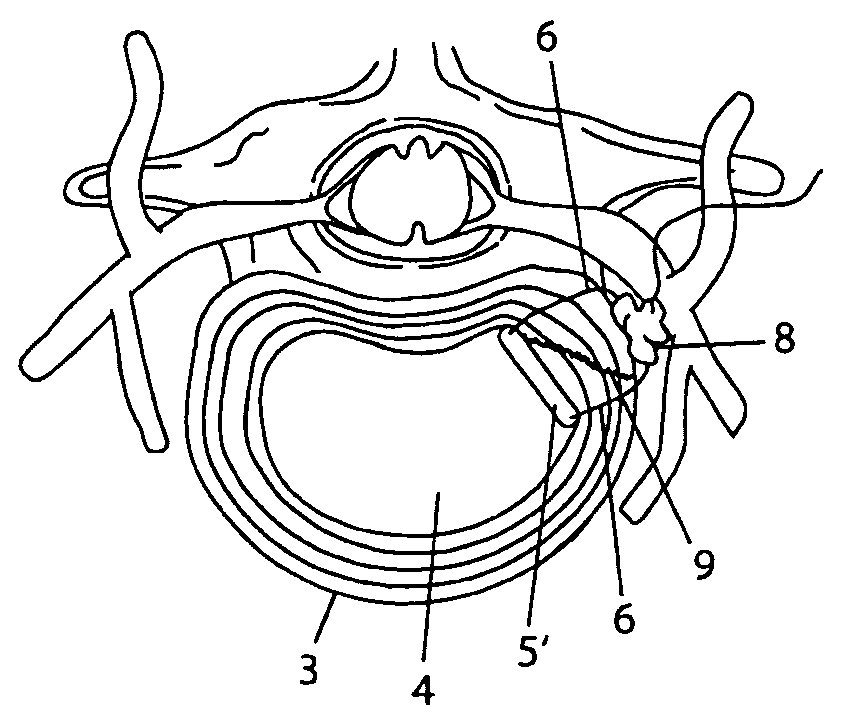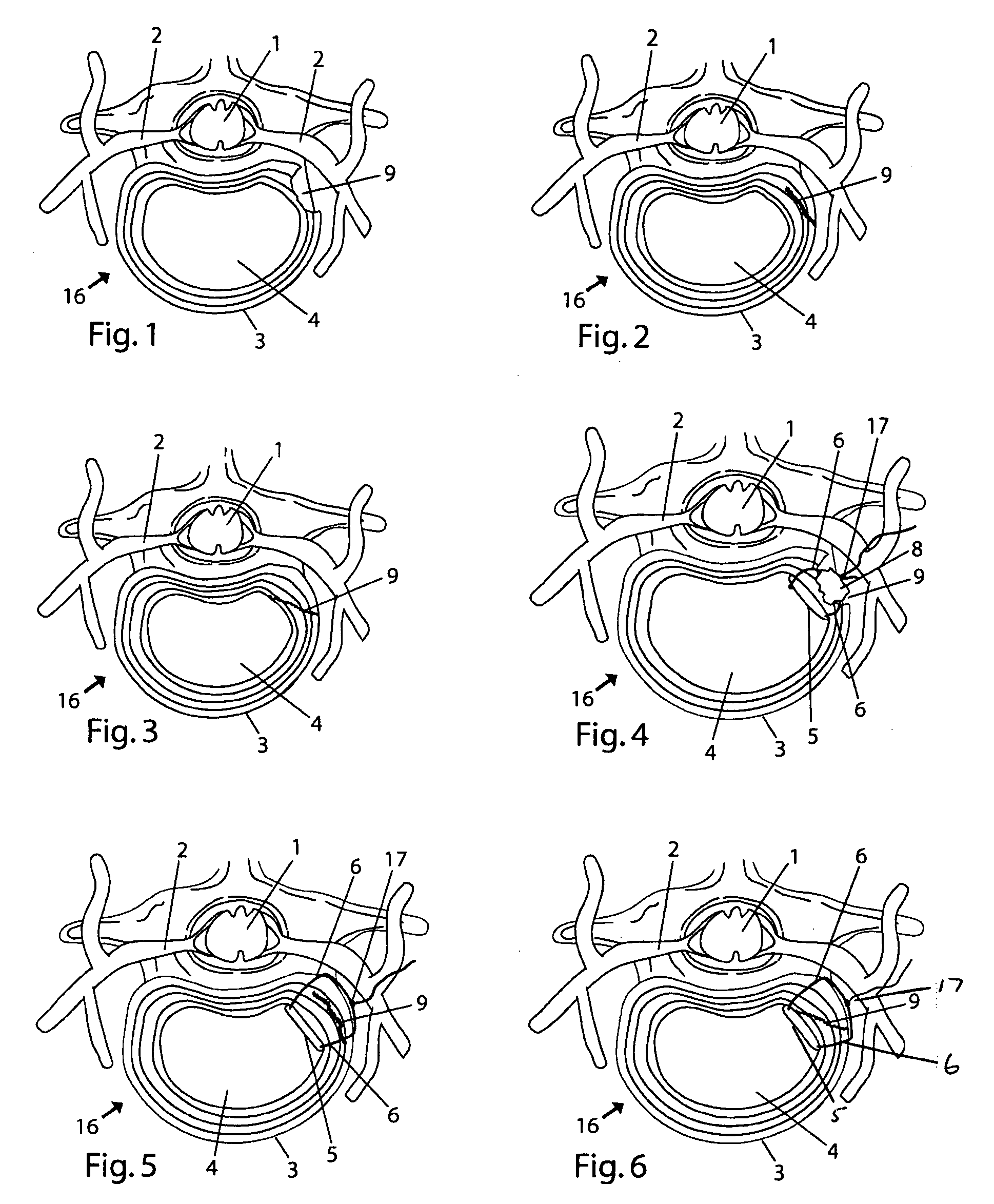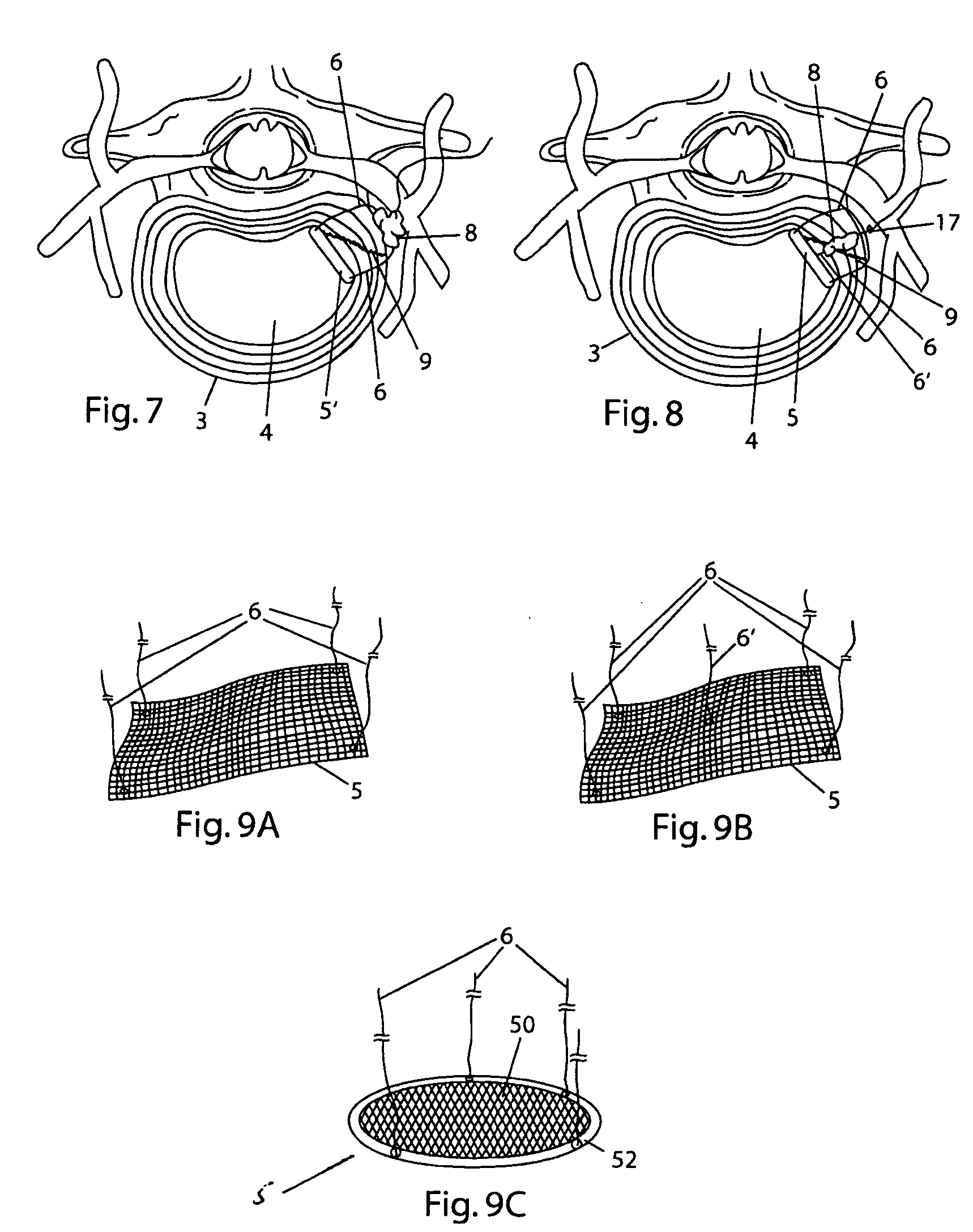System and devices for the repair of a vertebral disc defect
a technology for vertebral discs and systems, applied in the field of human surgery, can solve the problems of reduced productivity, significant economic impact of such problems, and no position can ease pain or discomfort, and achieve the effect of less trauma and faster healing times for patients
- Summary
- Abstract
- Description
- Claims
- Application Information
AI Technical Summary
Benefits of technology
Problems solved by technology
Method used
Image
Examples
Embodiment Construction
Repair of Tears of the Annulus Fibrosis
[0063] The annulus fibrosis (AF) of the intervertebral spinal disc is a lamellar configuration of collagen layers intended to maintain the soft viscous internal nucleus pulposus (NP), provide for motion and linkage of the adjacent vertebral bodies (VB). Certain degenerative or pathologic changes may occur either within the NP or the AF which can lead to over stress of the AF and subsequent damage to or tearing of the AF. If left untreated, herniation of the NP may occur through the tear, and most importantly, the herniation may progress posteriorly toward the spinal cord and major nerve roots. The most commonly resulting symptoms are pain radiating along a compressed nerve and low back pain, both of which can be crippling for the patient. The AF may also be torn through traumatic injury, which can lead to progressive degenerative changes and herniation or ultimately listhesis of the adjacent VB.
[0064] An embodiment of the present invention i...
PUM
| Property | Measurement | Unit |
|---|---|---|
| Flexibility | aaaaa | aaaaa |
| Tension | aaaaa | aaaaa |
| Conformation | aaaaa | aaaaa |
Abstract
Description
Claims
Application Information
 Login to View More
Login to View More - R&D
- Intellectual Property
- Life Sciences
- Materials
- Tech Scout
- Unparalleled Data Quality
- Higher Quality Content
- 60% Fewer Hallucinations
Browse by: Latest US Patents, China's latest patents, Technical Efficacy Thesaurus, Application Domain, Technology Topic, Popular Technical Reports.
© 2025 PatSnap. All rights reserved.Legal|Privacy policy|Modern Slavery Act Transparency Statement|Sitemap|About US| Contact US: help@patsnap.com



